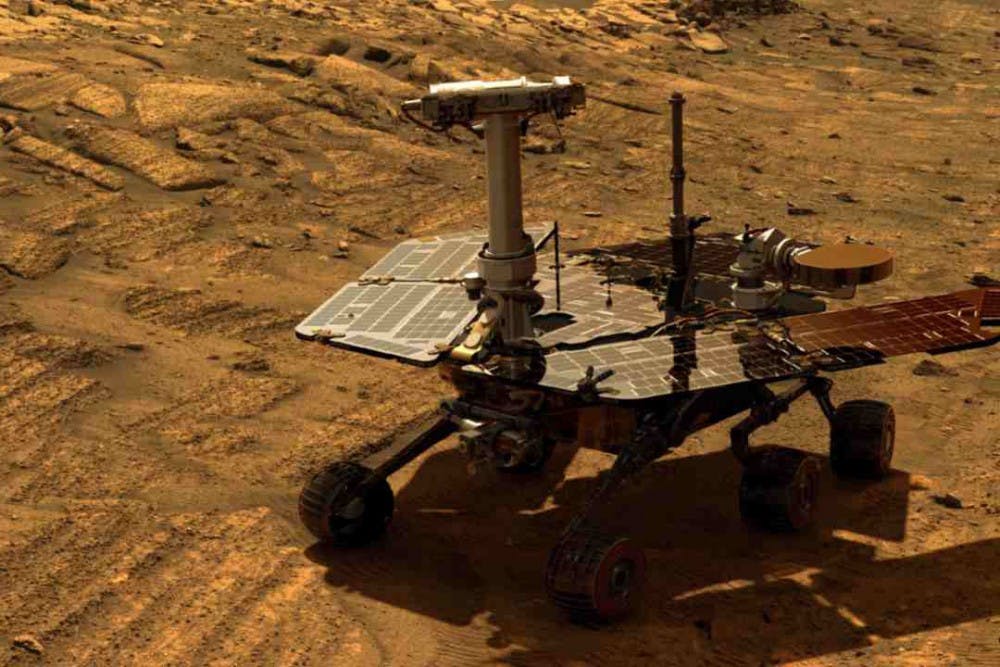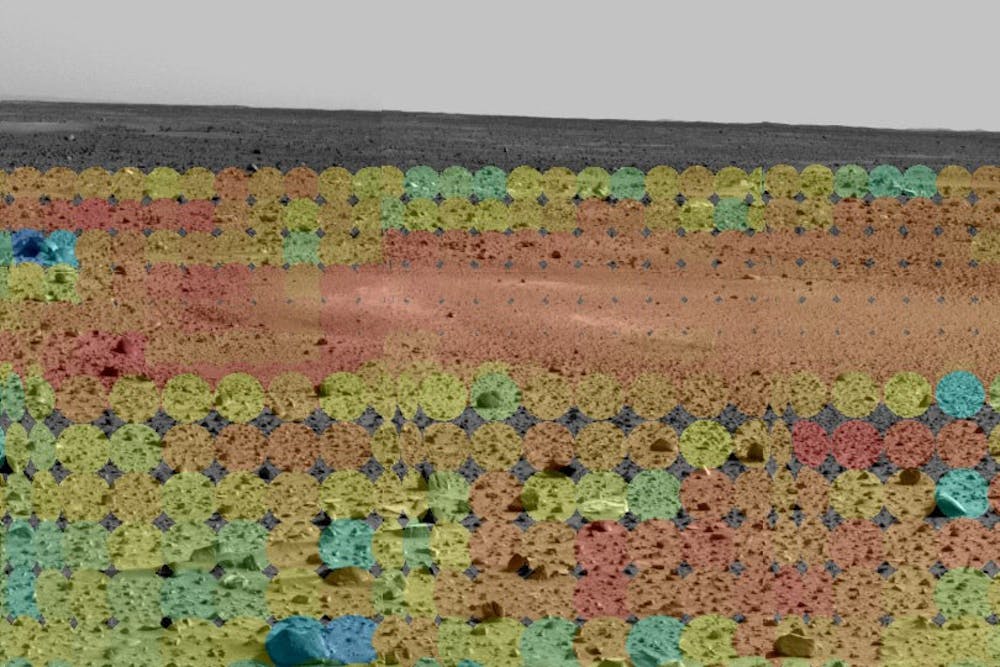Fourteen and a half years after its official mission was slated to end, NASA’s Opportunity Rover rolled to a stop for the last time on the Red Planet.
The six-wheeled, solar-powered rover was launched in the early 2000s with the mission to find water on Mars, equipped with specialized technology designed, developed and operated at ASU.
NASA administrators said that the rover discovered signs of water on Mars at a time when little existing research suggested so and that the potential for future Mars missions all owes their beginnings to the Opportunity Rover.
"It is because of trailblazing missions such as Opportunity that there will come a day when our brave astronauts walk on the surface of Mars," NASA Administrator Jim Bridenstine said in a Wednesday press release announcing the end of the mission. "And when that day arrives, some portion of that first footprint will be owned by the men and women of Opportunity and a little rover that defied the odds and did so much in the name of exploration."
Some of Opportunity’s most important discoveries, including a mineral vein deposited by water, were made by an infrared spectrometer called the Mini-TES that was built and operated at ASU, said Jonathon Hill, the ASU-based mission planner for the rover's imaging system.
All aspects of ASU’s Mars mission, including the Opportunity mission, are built on-site at a facility that can be seen from the viewing windows of the ISTB4 building on ASU’s Tempe campus, Hill said.
“The instrument that we ran from ASU, we built it here, we operated it from here, all the scientists are from here and now we are building similar instruments to go on future missions in the ISTB4 building,” he said. “So people can come by there and look through the windows and actually see us assembling the instruments.”
In addition to finding evidence of water on Mars, the rover set a one-day driving record of 721 feet, returned over 217,000 images, exposed the surface of 52 rocks and discovered indications of ancient water at the Endeavour Crater, according to NASA.
The original, short lifespan of the rover was predicted due to the strong wind and dust that researchers figured would build up, blocking the solar panels.
But the strong wind ended up saving the rovers life and kept it rolling for 14 more years, Hill said.
“The thing we weren’t really counting on was wind, and specifically dust-devils, cleaning our solar panels for us, because that is how we thought we would die is that dust would collect on the solar panels (and) block out the sun,” he said. “The wind was really good at clearing the dust off the panels and returning us to full power.”
The fact that Opportunity ran as long as it did speaks to the mission team's design, Hill said.
“Opportunity’s original mission was to verify evidence for liquid water on the surface of Mars,” he said. “The initial mission plan was for 90 Martian Days, but all the engineers and all the people involved with building the instruments all designed it to last twice as long. So the fact that reached 180 days was not really a surprise to anyone.”
After the success of the initial mission, Opportunity continued to provide valuable data for an additional 14 years. Michael Watkins, the director of NASA's Jet Propulsion Laboratory, highlighted the final resting place of the rover in the press release on Wednesday.
"I cannot think of a more appropriate place for Opportunity to endure on the surface of Mars than one called Perseverance Valley," Watkins said in the press release. "The records, discoveries and sheer tenacity of this intrepid little rover is testament to the ingenuity, dedication and perseverance of the people who built and guided her."
Thomas Zurbuchen, the associate administrator for NASA’s Science Mission Directorate, said there was much to be gained from the loss.
"Whatever loss we feel now must be tempered with the knowledge that the legacy of Opportunity continues, both on the surface of Mars with the Curiosity rover and InSight lander, and in the clean rooms of JPL where the upcoming Mars 2020 rover is taking shape,” Zurbuchen said.
The end of Opportunity's mission is not the end of ASU’s presence on Mars – ASU remains involved in current missions, studying the data that the rover sent back and prepping for the most ambitious Mars mission yet, set to launch in 2020. The 2020 mission seeks to answer key questions such as those about the potential for life on Mars and future human expeditions to the planet.
Reach the reporter at isaac.windes@asu.edu or follow @isaacdwindes on Twitter.
Like The State Press on Facebook and follow @statepress on Twitter.





